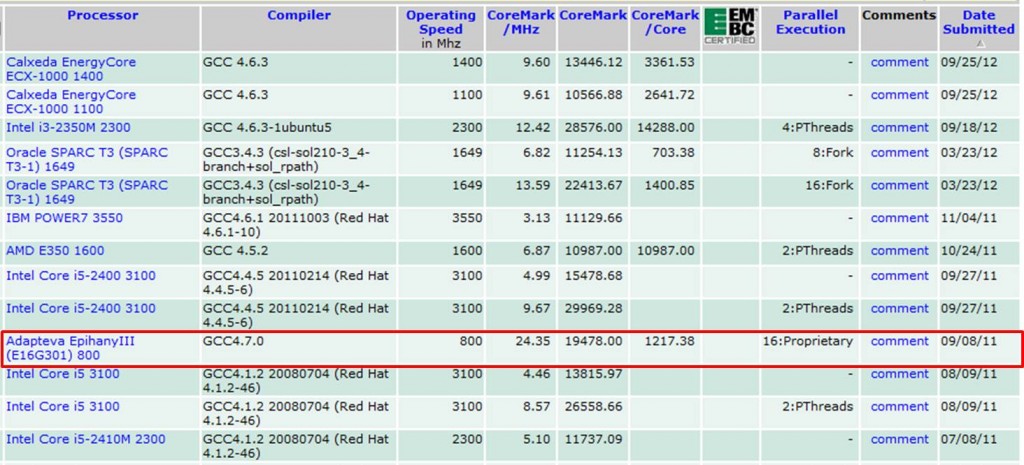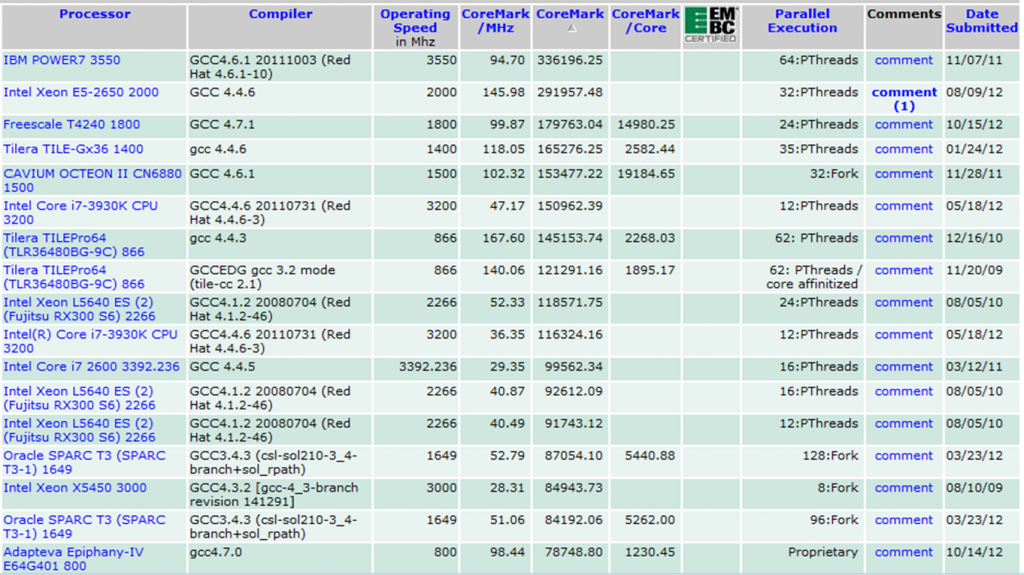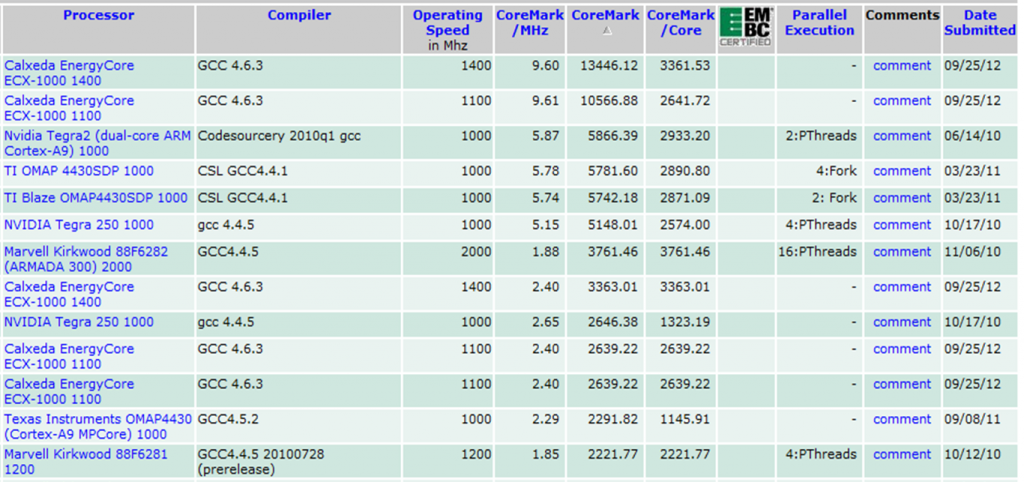More evidence that the Epiphany multicore processor is a proper CPU
With all the different metrics used to market microprocessors today it can be very challenging to separate the winners from the losers. Should we count #cores, GHZ, GFLOPS, GFLOPS/Watt, MIPS/Watt, GIPS, GOPS, IO bandwidth, on chip cache sizes, issue widths, kernel benchmarks, application performance, or some combination of all of them to declare the ultimate winner?
The truth is that a single number can never fully describe the performance of an architecture. What really matters is how many seconds and how many joules YOUR application consumes on a specific platform.
Benchmarks can be used as an effective measuring stick to compare different microprocessors. One such popular benchmark is CoreMark® from EEMBC®.
CoreMark® is comprised of small and easy to understand ANSI C code with a realistic mixture of read/write operations, integer operations, and control operations. CoreMark® has a total binary size of no more then 16K using gcc on an x86 machine and includes functions such as: “matrix manipulation (to allow for the use of MAC and common math operations), linked list manipulation (to exercise the common use of pointers), state machine operation (common use of data dependent branches), and Cyclic Redundancy Check (CRC is a very common function used in embedded)”. To get more information about CoreMark®, visit: http://coremark.org/
The following list shows the top performing microprocessors running CoreMark® as of October 17th, 2012. As you can see, the 64-core Epiphany-IV 28nm processor is in the same performance class as some real heavy weight server level microprocessors. The CoreMark® is not a floating point benchmark and does not suit the Epiphany architecture particularly well. Despite this, the Epiphany-IV processor performs exceptionally well when energy efficiency is brought into the mix. The Epiphany-IV maximum chip power consumption is only 2 Watts, a fraction of the power consumption consumed by the other candidates on the list!
The 16 core Epiphany-III processor has a fourth of the performance of the 64 core Epiphany-IV processor as shown in the screen-shot below.
As a second comparison, here is a screenshot showing published results for some popular mobile processors in approximately the same power class as the Epiphany-IV processor as of October 17th,2012. The complete searchable list of CoreMark® benchmarks can be found at http://www.coremark.org.
Conclusion:
These results clearly demonstrate the effectiveness of the Epiphany instruction set, C-compiler, and micro-architecture in compiling and executing the C-code within the CoreMark® benchmark. This doesn’t guarantee that the Epiphany will be a great fit for every application, but it does suggest that the Epiphany could be more than just a floating point co-processor.

